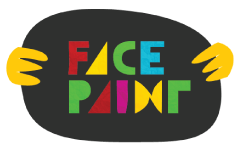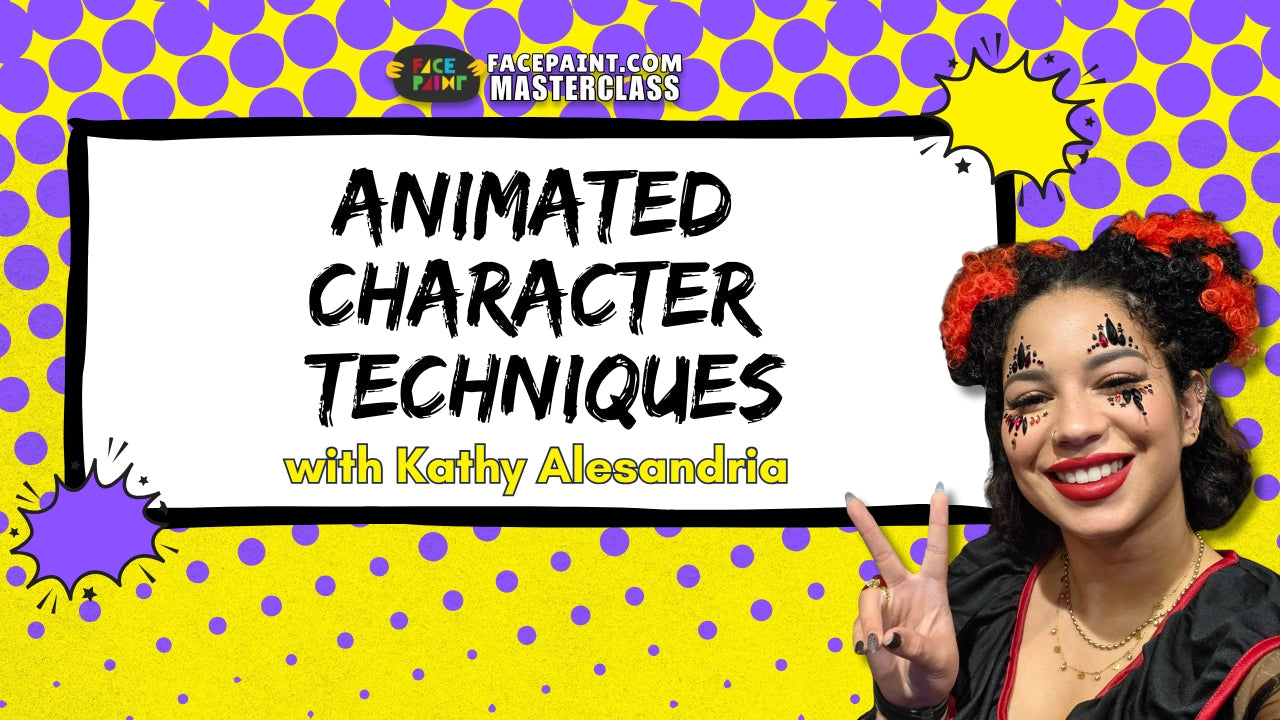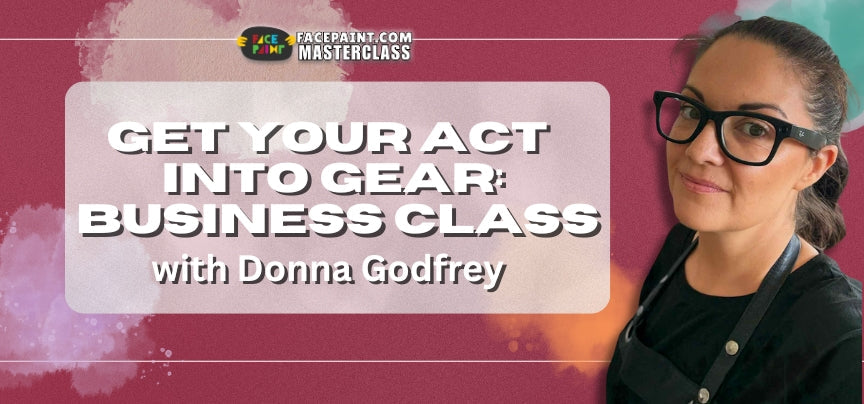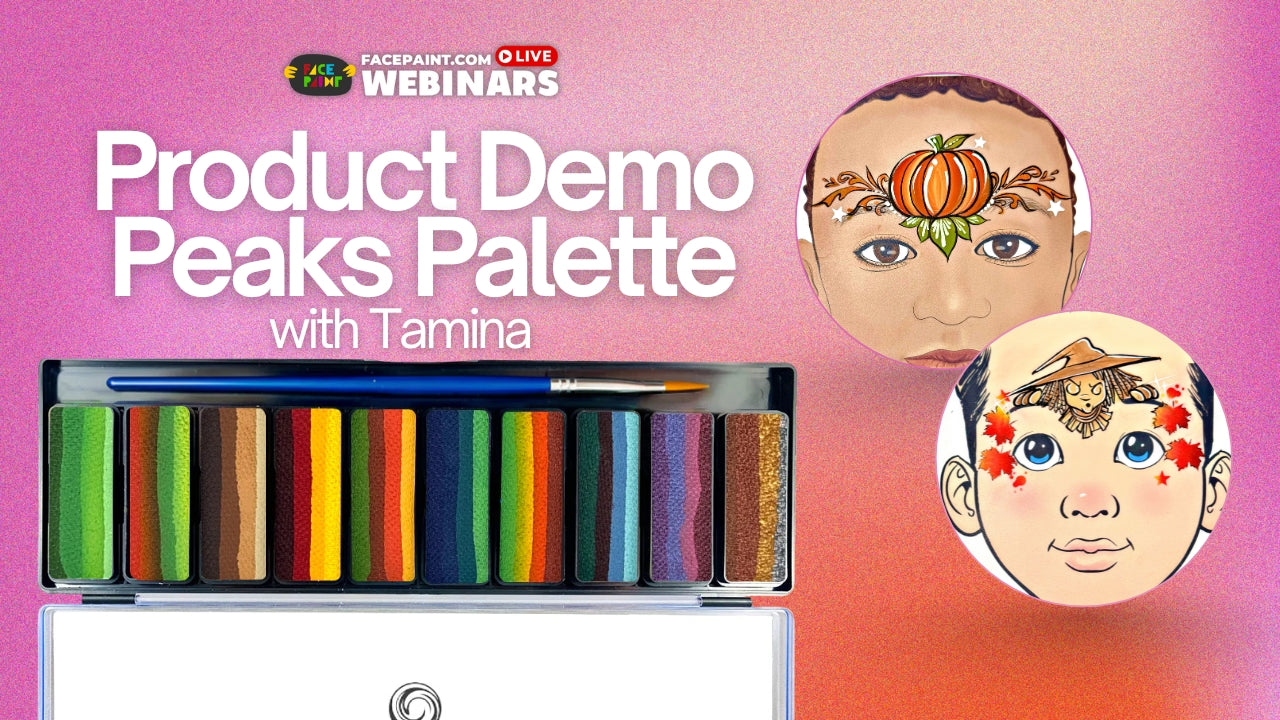
There have been many great ideas which make face painting either easier to do or more visually effective, but one of the hottest new innovations embraced by the world of face painters has been bling clusters.
Before bling clusters, many face painters were already adding gems to their designs and increasing their marketability by doing so. But adding entire groups of gems to a design was a time consuming process, if applied one by one. When face painters discovered they could create custom bling clusters in advance and use them later at events, it was not only an immense time saver when faced with the pressure of a long line, but was also a great way to add tremendous visual value to designs which called for gems.
If you haven’t tried to create your own bling clusters yet, you’re in for some creative fun. Bling clusters are easy to create and stunning to incorporate in face painting designs. You’ll need a few basic tools and instructions to begin.
Materials
• An assortment of large, medium, and small gems and pearls in all colors
• Toothpicks or bamboo skewers
• Liquid bandage
• Medical or pet silicone or dimensional fabric paint (DO NOT use silicone from a hardware store. The silicone you would find in a hardware store has chemicals which you don’t want on the skin, even when the silicone is in its inert form.)
• Plastic page protectors
• Graph paper
• Heavy duty packing tape
• Black card stock
• Glitter tattoo adhesive or eye lash adhesive (Quo is latex-free and water soluble)
• Paper towels
• Wax paper
What to consider before you begin
1. Safety
Before you begin creating your own beautiful bling clusters, there are some important things to keep in mind. If you use silicone, do not use the type from hardware stores, which has chemicals which should not be placed on skin. Instead, choose a medical or pet silicone. Also, NEVER put liquid silicone directly on the skin. You will be building your bling clusters on plastic and waiting until they are safely dry before removing them. Generally, it takes at least 24 hours for the silicone to solidify and become inert so they can be used.

2. Design
Choose a pretty central piece for your bling cluster. The central gem shouldn’t be so large that it overcomes your design, but should be a focal point which it accents your design. Over time you’ll discover the size and shapes you and your clients like prefer, but don’t be afraid to experiment and try shapes or colors that aren’t your personal favorites.
Choose a shape for the entire cluster. Common cluster shapes are the Y-shape, the V-shape, the t-shape, the teardrop shape, the diamond shape, and the asymmetrical shape. In choosing a shape, consider what purposes you may want to use a bling cluster for. Bling clusters make lovely accent pieces for butterfly masks, so a butterfly body is an obvious choice, but clusters are also effectively incorporated into designs for mermaids, princesses, cheetahs, tigers, superheroes, and many other favorites.
3. Work surface
I experimented with several surfaces while trying to find something which was easy to work on and which also allowed me to remove the gems once they were dry. As I researched, I found face painters recommended a number of surfaces for creating clusters. Karen Husted and Lilly Walters Schermerhorn use plastic page protectors. The advantage of the page protectors is that they are clear, and you can place graph paper or a practice face inside, allowing you to make symmetrical designs with the guidelines underneath. Heather Green recommends plastic bags. (One face painter I came across even recommended parchment paper, but my gems stuck to it, and I had to rip them off.) The silicone adhered to the page protectors I first tried so I wasn’t able to remove my clusters and wasted a lot of gems. This may have been because of the brand of page protector I had on hand, but I found that by placing strips of heavy duty packing tape on the page protector, I had no difficulty in removing the gems later.

4. Gem binder and foundation
In order to keep the gems in an assembled group, you need some kind of binder which will solidify and hold them in place. There are several different products which will work for this. Lilly Walters Schermerhornrecommends that you put a layer of liquid bandage down first before you create the design and allow it to dry a short time before your proceed with your gem binder, so I do this as well, since liquid bandage is made to be used on the skin.
For the next layer, you will use silicone or dimensional fabric paint. Silicone takes around 24 hours or more to cure. If you wait several days and it’s still gooey, you may have a bad batch. (This happened to me on my first attempt, and the company replaced it for me.) Once you’ve applied it to your surface, you’ll want to put your gems in place on it immediately. If you choose to use dimensional fabric paint, you need to wait a couple of minutes after you put it down so it can set partially before applying your gems to it. The fabric paint will take approximately 48 hours to dry.

5. Display and transportation
It’s best to remove your bling clusters from the sheet you originally created them on to make sure you can pull them up easily during an event. Also, you’ll be able to trim any excess background silicone or liquid bandage away if you do this. You can either keep them on their original surface or, since the clusters tend to retain their ability to cling to plastic, you can move them to a small binder which you keep in your kit.
I transport my bling clusters on 4×6 inch black yardstick which has strips heavy duty packing tape on it. The reason I use these smaller pieces is that they fit nicely in the zippered plastic bags which I use for transporting gems. Also, because the clusters are mounted on a black background, they show up well.
6. Adhesives
There are a number of adhesives which will work for keeping gem clusters in place. Karen Husted recommends using Quo #1 eyelash adhesive. It does not contain latex, and is water soluble. (In her beginner video for bling, she does recommend that you use it sparingly or it won’t hold well, however.)
Lilly Walters Schermerhorn suggests using a few small drops of glitter adhesive, which is what I also use. If you use glitter tattoo adhesive, keep in mind that it is not water soluble, and will need to be removed with rubbing alcohol or baby oil. Experimentation will help you determine what works best for you in holding the clusters in place under different conditions. As it’s a fairly common allergy, stay away from anything containing latex.
Now that you’re aware of the options, don’t miss part two of this post, which has step-by-step visuals and instructions for creating your own gorgeous bling clusters.
Beth MacKinney is the owner of and primary face painter for Face Paint Pizzazz in the NW Chicago suburbs. She also writes blogs and tutorials for Clownantics.com.
 FREE SHIPPING FOR USA ORDERS OVER $100
FREE SHIPPING FOR USA ORDERS OVER $100








Beth MacKinney
November 02, 2018
I think I picked the Quo up in the cosmetic aisle at Walmart or Target, but I’d recommend the glitter glue adhesive for gems and clusters.